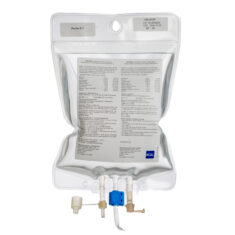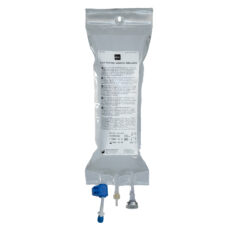Infos
- Ensure complete flushing of blood
- Decrease enzyme activity: cool the organ (hypothermic)1
- Ischaemic reperfusion damage (IRI) reduction:
- Prevention grafts from tissue acidosis : phosphate, sulfate, and sodium hydoxide1
- Regeneration of high-energy substances : adenosine2
- Prevention of oxidative damage: glutathione and allopurinol4,5
- Prevention of hypothermia-induced cellular swelling and oedema: PEG + membrane-impermeable substances (Raffinose & Lactobionic acid)3
The IGL-1® Solution is an extra-cellular colloid solution with polyethylene glycol (PEG) as colloid polymer.
1. F. O. Belzer and J. H. Southard, ‘Principles of Solid-Organ Preservation by Cold Storage’.
DOI 10.1097/00007890-198804000-00001.
2. F. O. Belzer and others, ‘Beneficial Effects of Adenosine and Phosphate in Kidney
Preservation’, DOI 10.1097/00007890-198336060-00008.
3. Charles Y. Lee and Martin J. Mangino, ‘Preservation Methods for Kidney and Liver’, DOI
10.4161/org.5.3.9582.
4. Richard E. Hayden and others, ‘The Effect of Glutathione and Vitamins A, C, and E on
Acute Skin Flap Survival’, DOI 10.1288/00005537-198710000-00011.
5. Beatriz Prieto-Moure and others, ‘Allopurinol in Renal Ischemia’, DOI 10.3109/
08941939.2014.911395.
6. Corinne Antoine, Régis Bronchard, Laurent Durin. ‘Protocol for Maastricht III Organ Recovery
– DGMS–DPGOT – Version n°7 November 2019’.
Contact us





